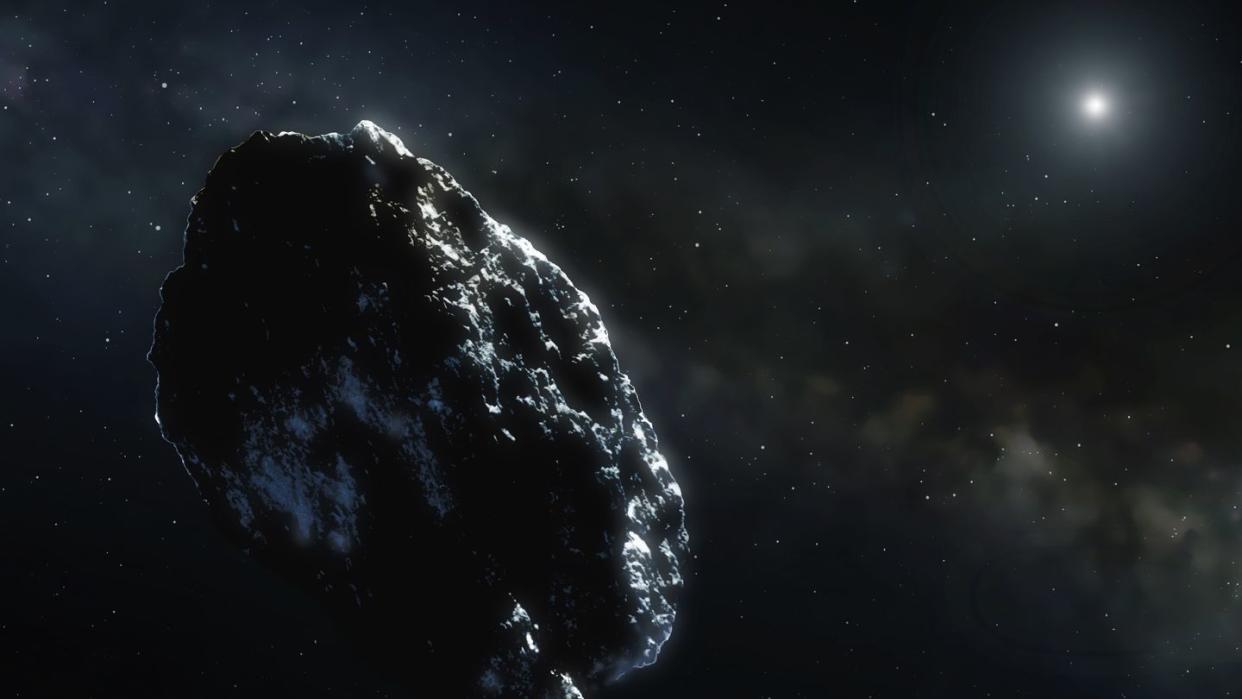NASA Crashed a Spacecraft Into an Asteroid and There Could Be Some Consequences

"Hearst Magazines and Yahoo may earn commission or revenue on some items through these links."
In September of 2022, NASA’s DART mission smashed into the astroid Dimorphos at 14,000 miles per hour to test the effects of asteroid deflection.
Although the mission was a success, scientists have since been analyzing the after-effects of this human-induced celestial redirection—the first in history.
A new paper details how, in 6,000 and 13,000 years, debris from this collision could find its ways to Mars and leave behind 1,000-foot craters in its surface.
Asteroids loom large in our apocalyptic imagination. After all, the dinosaurs didn’t escape a death-by-space-fireball. Why should mammals think they’re an exception? And there is cause for worry. Roughly 25,000 asteroids larger than 460 feet are buzzing about in Earth’s neighborhood, and some 14,000 have yet to be found. So, if humanity ever did find itself behind the eight-ball of destiny, it might be nice to know there’s an extinction-preventing plan in place.
Luckily, NASA had the same idea. Which is why, in September of 2022, the space agency smashed a spacecraft into the asteroid Dimorphos to alter its trajectory. This 14,000-mph kinetic impact was part of the Double Asteroid Redirection Test (DART) mission, which was our species’ first attempt at purposely redirecting an object in space. While the mission was hailed as a complete success, the fallout from that celestial run-in is producing some unintended consequences.
In a new paper published in the journal Monthly Notices of the Royal Astronomical Society in mid-February, Marco Fenucci—a researcher at the European Space Agency’s (ESA) Near-Earth Objects Coordination Center (NEOCC)—concluded that, while the resulting debris from the DART impact won’t burn up in Earth’s atmosphere, some is headed toward Mars’s orbit, where a potential impact would have a much different outcome.
“There may be a chance for them to impact Mars in the future,” the paper reads. “Given the rarefaction of the Martian atmosphere, we expect the boulders to arrive intact on the ground and excavate a small impact crater.”
Speaking with National Geographic, Fenucci noted that impact craters could be up to 1,000 feet wide. But because of its thin atmosphere, Mars is no stranger to such impacts—in fact, Mars gets whacked by space debris 3.2 times more often than even the Moon. These impacts also pale in comparison to Mars’ largest impact crater, the Hellas basin, which is roughly twice the size of Alaska.
While estimates dozens of millennia into the future can be a little fuzzy, these new space boulders won’t make a close pass by Mars until some 6,000 years into the future, and again in 13,000 years.
So, while the DART mission could have a (far) future impact on the Red Planet, the more pressing concern is the ESA’s upcoming Hera mission—designed to investigate the effects of the DART impact in greater detail. Launching in October of this year and reaching the Didymos−Dimorphos system in December of 2026, Hera will likely encounter some 37 new boulders floating around the binary asteroids in a debris field.
If a collision is imminent, the spacecraft may need to be maneuvered around these newly dislodged rocks. But, thankfully, space is big, and the possibility of impact is still pretty low.
Hopefully, Hera will arrive at the twin asteroids safe and sound, learn all the details of DART’s impact, and provide humanity with a much needed Plan B for, well, going the way of the dinosaurs.
You Might Also Like
